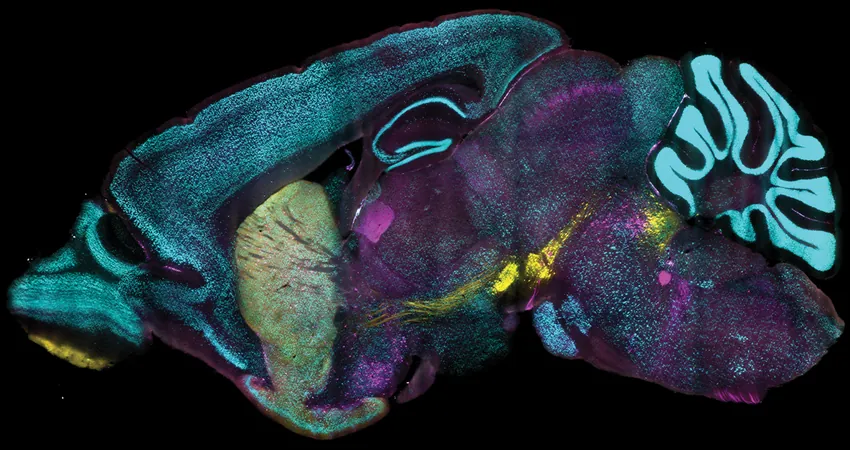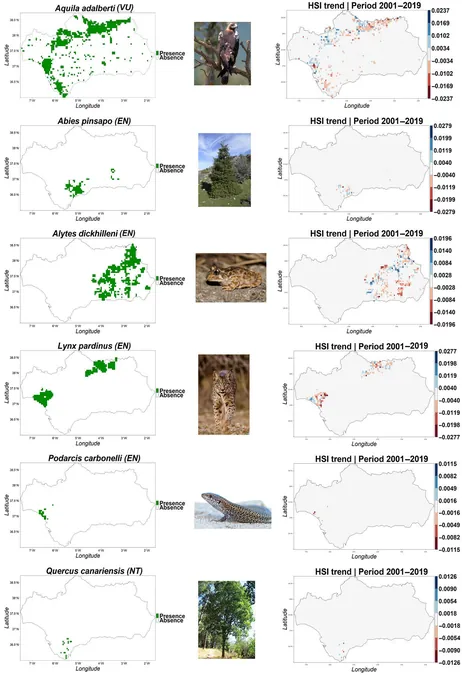
Revolutionary CuRVE Technology Transforms Protein Mapping Across Entire Organs!
2025-01-24
Author: John Tan
Breakthrough in Biological Research
MIT researchers have made a groundbreaking advancement in the field of biological research with the introduction of a new technology called Continuous Redispersion of Volumetric Equilibrium (CuRVE). This innovative method allows scientists to label proteins in millions of individual cells within fully intact tissues, enabling rapid and uniform protein mapping across large tissue samples, such as entire rodent brains, in just one day!
Details of the Study
This incredible breakthrough is detailed in a recent study published in Nature Biotechnology, titled “Uniform volumetric single-cell processing for organ-scale molecular phenotyping.” According to senior author Kwanghun Chung, PhD, who is an associate professor at MIT's Picower Institute for Learning and Memory, traditional methods for studying cellular molecules involve either breaking down tissues into isolated cells or slicing them into thin sections. Unfortunately, these techniques can hinder our ability to investigate dense tissues effectively due to limited penetration of light and chemicals.
Pioneering Protein Visualization Technologies
Chung’s lab has a history of pioneering protein visualization technologies, including the CLARITY and SHIELD methods, which make it possible to explore entire organs by rendering them transparent. Last year, the team introduced a high-resolution imaging technique that preserves human brain tissues while achieving high throughput, leading to 3D imaging capabilities. Now, they sought a way to chemically label entire organs for deeper scientific insights.
The CuRVE Process
Using a relatable analogy, Chung likens the CuRVE process to marinating a thick steak. In a standard marinating scenario, the outer layers absorb flavor quickly, while the inner layers require more time. Similarly, in the previous methods of tissue processing, antibodies—the chemicals essential for labeling—struggled to diffuse adequately, often taking weeks to achieve uniformity.
Addressing the Challenge
CuRVE addresses and resolves this challenge by maintaining a dynamic equilibrium within the chemical environment of the tissue. This allows antibodies to disperse evenly and rapidly across the entire tissue sample. This innovative approach includes sophisticated techniques that modulate antibody binding speeds and enhance penetration into tissues by employing methods like stochastic electrotransport, which utilizes electric fields to expedite the process.
The Development of eFLASH
The team also screened various chemicals and found that deoxycholic acid can effectively modulate the speed of antibody binding, optimizing the labeling process. Their combined approach led to the development of a tool named eFLASH, which successfully labeled large samples—including entire mouse and rat brains and human tissue blocks—within a single day.
Performance Comparison
In side-by-side tests, eFLASH outperformed genetic labeling methods, which often struggle with timing inconsistencies between protein expression and fluorescent markers. The researchers found significant variations in target protein expression between traditional genetic labeling and their innovative eFLASH method, which uncovered previously undetected regionalized losses in specific protein expressions in wild-type adult mice.
Complementary Insights
Notably, these two methods—genetic engineering and antibody-based labeling—serve different purposes and can provide complementary insights into protein expression. Chung’s team highlighted the importance of using both methods to gain a comprehensive understanding of tissue phenotypes, noting that their research signifies a major leap forward.
A Transformative Shift in Analysis
The CuRVE technology, along with its application in eFLASH, represents a transformative shift in volumetric single-cell analysis. With its ability to facilitate extensive protein labeling in large samples, this revolutionary approach opens doors for new discoveries in neuroscience and beyond, potentially reshaping our understanding of complex biological processes.
Future Possibilities
This leap in technology raises the question: what other secrets of the human body await discovery with CuRVE?

 Brasil (PT)
Brasil (PT)
 Canada (EN)
Canada (EN)
 Chile (ES)
Chile (ES)
 Česko (CS)
Česko (CS)
 대한민국 (KO)
대한민국 (KO)
 España (ES)
España (ES)
 France (FR)
France (FR)
 Hong Kong (EN)
Hong Kong (EN)
 Italia (IT)
Italia (IT)
 日本 (JA)
日本 (JA)
 Magyarország (HU)
Magyarország (HU)
 Norge (NO)
Norge (NO)
 Polska (PL)
Polska (PL)
 Schweiz (DE)
Schweiz (DE)
 Singapore (EN)
Singapore (EN)
 Sverige (SV)
Sverige (SV)
 Suomi (FI)
Suomi (FI)
 Türkiye (TR)
Türkiye (TR)
 الإمارات العربية المتحدة (AR)
الإمارات العربية المتحدة (AR)